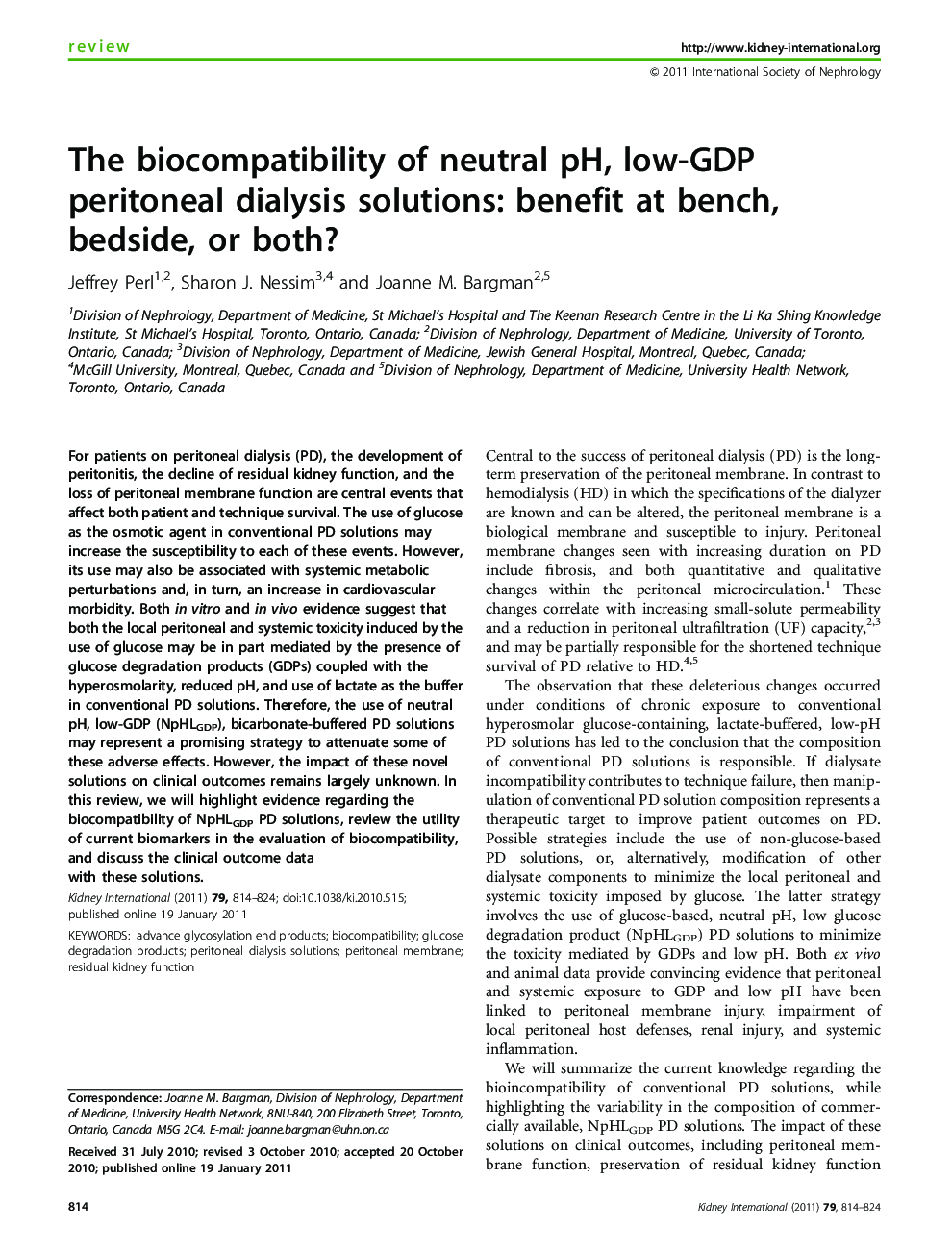| Article ID | Journal | Published Year | Pages | File Type |
|---|---|---|---|---|
| 3886434 | Kidney International | 2011 | 11 Pages |
For patients on peritoneal dialysis (PD), the development of peritonitis, the decline of residual kidney function, and the loss of peritoneal membrane function are central events that affect both patient and technique survival. The use of glucose as the osmotic agent in conventional PD solutions may increase the susceptibility to each of these events. However, its use may also be associated with systemic metabolic perturbations and, in turn, an increase in cardiovascular morbidity. Both in vitro and in vivo evidence suggest that both the local peritoneal and systemic toxicity induced by the use of glucose may be in part mediated by the presence of glucose degradation products (GDPs) coupled with the hyperosmolarity, reduced pH, and use of lactate as the buffer in conventional PD solutions. Therefore, the use of neutral pH, low-GDP (NpHLGDP), bicarbonate-buffered PD solutions may represent a promising strategy to attenuate some of these adverse effects. However, the impact of these novel solutions on clinical outcomes remains largely unknown. In this review, we will highlight evidence regarding the biocompatibility of NpHLGDP PD solutions, review the utility of current biomarkers in the evaluation of biocompatibility, and discuss the clinical outcome data with these solutions.
